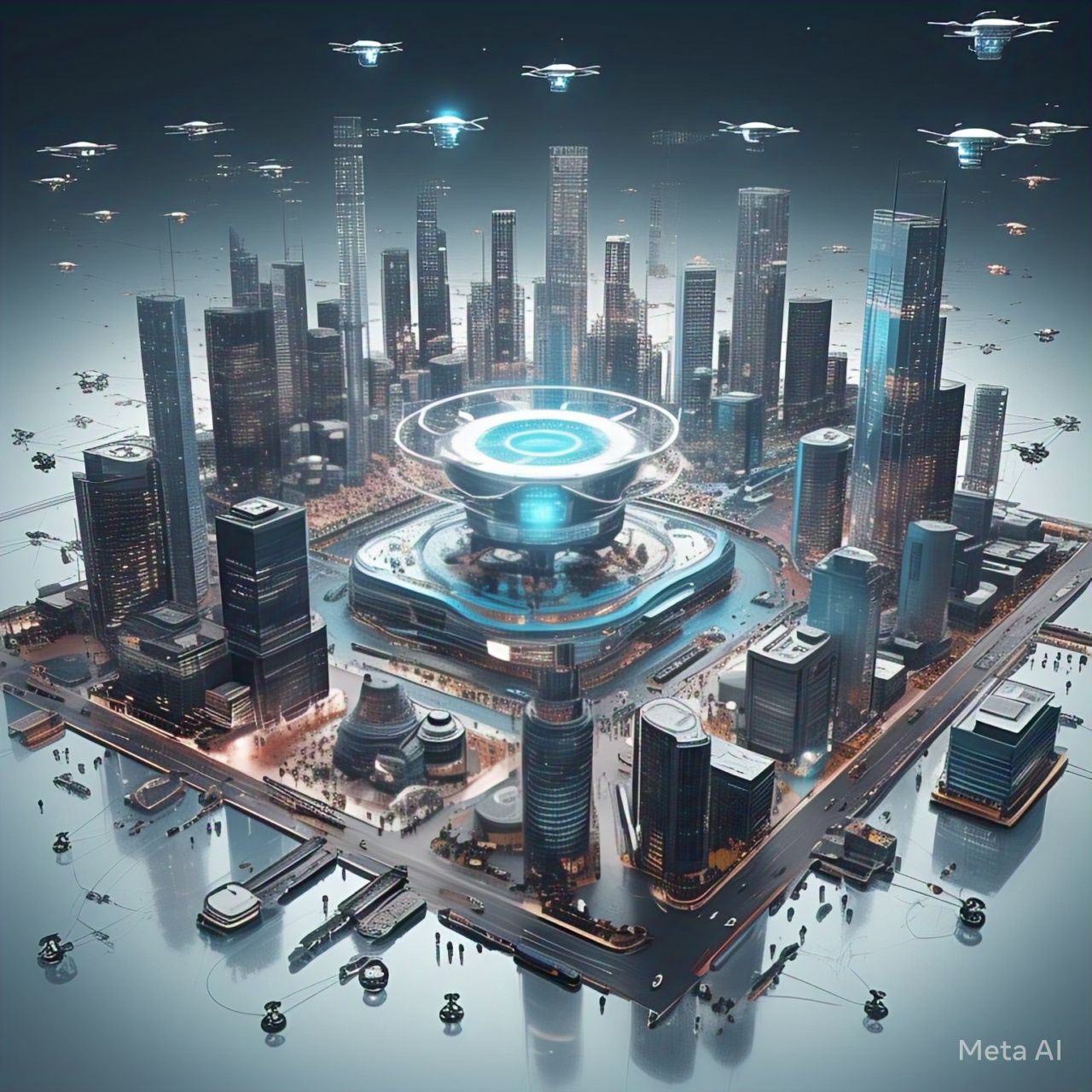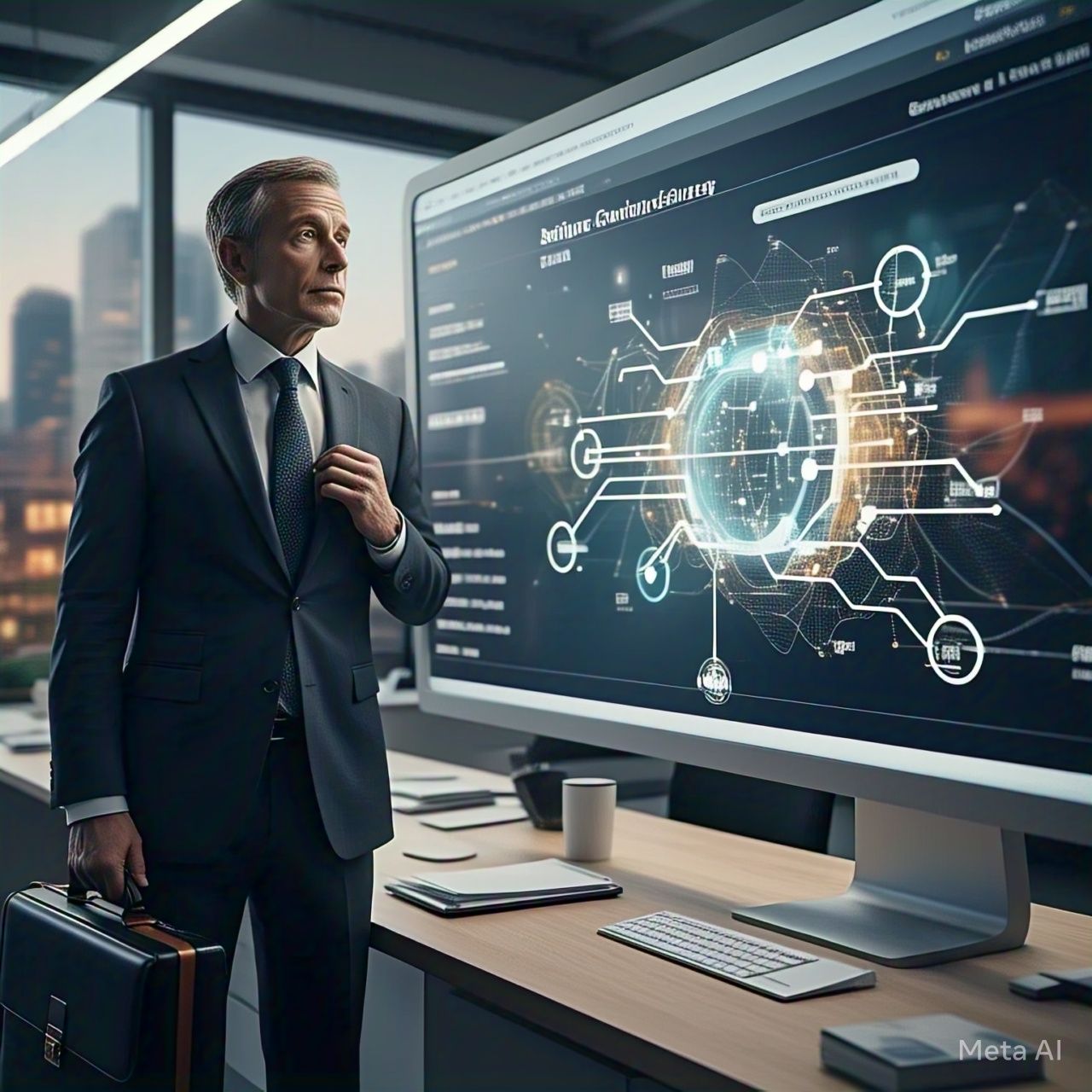Table of Contents
- Introduction
- Understanding Smart Cities
- Role of AI in Smart Cities
- AI in Urban Planning and Infrastructure
- AI for Traffic and Transportation Management
- AI-Powered Public Safety and Security
- AI in Environmental Sustainability
- AI in Smart Governance and Citizen Services
- Key AI Technologies Used in Smart Cities
- Machine Learning (ML)
- Internet of Things (IoT)
- Computer Vision
- Natural Language Processing (NLP)
- Challenges and Ethical Considerations
- The Future of AI in Smart Cities
- Conclusion
- FAQs
Introduction
The rapid urbanization of the 21st century has necessitated the development of smart cities, where technology and artificial intelligence (AI) play a crucial role in improving urban living. AI is transforming city management, optimizing traffic, enhancing security, and reducing energy consumption, making cities more efficient, sustainable, and livable.
This article explores how AI is shaping the future of smart cities, the technologies driving this transformation, and the challenges that must be overcome.
Understanding Smart Cities
A smart city integrates technology, data analytics, and AI to optimize urban infrastructure and services. By leveraging AI, cities can become more responsive to residents’ needs, improve efficiency, and enhance sustainability. According to Statista (2023), the smart city market is expected to reach $820 billion by 2025, highlighting the global shift towards AI-powered urban management.
Role of AI in Smart Cities
AI in Urban Planning and Infrastructure
AI helps in predictive urban planning, allowing city officials to design infrastructure based on data-driven insights.
Examples:
- Digital Twins: AI creates digital models of cities to simulate urban development before implementation.
- AI-driven Construction Management: AI optimizes construction schedules, reducing costs and improving efficiency.
AI for Traffic and Transportation Management
Traffic congestion is a significant urban issue. AI uses real-time data to optimize traffic flow, reduce congestion, and enhance public transportation.
Examples:
- AI-powered traffic lights adjust signal timings based on real-time traffic conditions.
- Autonomous public transport optimizes routes and schedules using AI.
- Predictive maintenance in metro systems ensures efficient public transport operations.
AI-Powered Public Safety and Security
AI enhances public safety through predictive analytics and surveillance technologies.
Examples:
- Facial recognition systems in smart cameras improve law enforcement efficiency.
- AI-driven crime prediction models help police departments allocate resources effectively.
- Emergency response optimization through AI-powered drones and sensors.
AI in Environmental Sustainability
AI plays a vital role in promoting sustainability by optimizing energy usage and reducing carbon footprints.
Examples:
- AI-enabled smart grids reduce energy waste and improve efficiency.
- AI-driven waste management systems predict and optimize waste collection routes.
- AI-based air quality monitoring helps cities implement pollution control measures.
AI in Smart Governance and Citizen Services
AI improves government services by automating processes, improving decision-making, and enhancing citizen engagement.
Examples:
- AI chatbots for instant response to citizen inquiries.
- Automated administrative tasks improve efficiency in public services.
- AI-based disaster response systems predict and mitigate natural disasters.
Key AI Technologies Used in Smart Cities
Machine Learning (ML)
ML enables smart cities to analyze vast amounts of data and optimize decision-making processes.
Internet of Things (IoT)
IoT devices collect and transmit data to AI-powered systems, enabling real-time monitoring and automation.
Computer Vision
AI-powered surveillance cameras and image recognition improve security and urban planning.
Natural Language Processing (NLP)
NLP allows AI assistants and chatbots to improve citizen engagement and automate government services.
Challenges and Ethical Considerations
Data Privacy and Security
With the vast amount of data AI processes, ensuring data privacy and cybersecurity is a major concern.
Bias in AI Algorithms
AI must be developed to eliminate biases in decision-making, ensuring fairness and inclusivity.
High Implementation Costs
Deploying AI in smart cities requires significant investment, posing financial challenges for governments.
The Future of AI in Smart Cities
The future of AI in smart cities includes advancements such as:
- Fully autonomous public transport systems.
- AI-powered smart buildings that adjust energy usage automatically.
- AI-driven climate change mitigation strategies.
Conclusion
AI is revolutionizing smart cities by enhancing efficiency, sustainability, and public safety. While challenges remain, continued innovation in AI technologies will drive the next evolution of urban living.
FAQs
1. How does AI improve traffic management in smart cities?
AI optimizes traffic flow using real-time data, AI-powered traffic signals, and predictive analytics to reduce congestion.
2. What role does AI play in public safety?
AI enhances security through surveillance systems, predictive crime analysis, and AI-driven emergency response mechanisms.
3. How does AI contribute to environmental sustainability in smart cities?
AI optimizes energy consumption, improves waste management, and monitors air quality for better urban sustainability.
4. What are the key challenges of AI in smart cities?
Challenges include data privacy concerns, bias in AI algorithms, and high implementation costs.
5. What is the future of AI in smart cities?
Future innovations include fully autonomous transportation, AI-driven urban planning, and climate change mitigation through AI.
Table: AI Applications in Smart Cities
| AI Application | Example | Benefit |
|---|---|---|
| Traffic Management | AI-powered traffic lights | Reduces congestion |
| Public Safety | Facial recognition cameras | Enhances security |
| Waste Management | Smart garbage collection | Optimizes waste disposal |
| Energy Efficiency | AI-driven smart grids | Reduces energy waste |
| Citizen Engagement | AI chatbots for government services | Improves service delivery |
AI is not just a tool but the driving force behind the smart cities of tomorrow. Its integration into urban infrastructure and services is set to transform urban living, making cities more efficient, livable, and sustainable.




